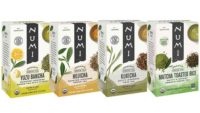Green Tea's Antibacterial Potential
Scientists have made a new discovery within a simple cup of green tea.

“When you brew a cup of tea, you typically don’t realize that there’s anything left behind,” said Tadas Sileika, a chemist at Northwestern University in Evanston, Ill.
Green tea leaves behind ingredients that can be used to make antibacterial coatings, which could be used on almost any material.
“We can now turn virtually any surface into something that can kill bacteria,” said Devin Barrett, a chemist at Northwestern University.
However, it is not just green tea with the germ-killing potential. Red wine, dark chocolate and cacao beans all have the same type of properties used to make coatings that adhere to even the most non-stick surfaces. In fact, the same sticky compounds are responsible for leaving the mouth with a sensation of dryness or puckering after a sip of red wine. The compounds stick to the mouth's saliva proteins.
“These materials are able to stick to Teflon,” said Sileika.
To make the coatings, the researchers extract ingredients from green tea or red wine, which are then dried in to a powder. The powder is then dissolved in water with a dash of salt to make a coating that is non-toxic to humans but deadly to bacteria.
They were easily able to coat lab glasses, business cards and medical IV tubing.
“There is a lot of potential to apply them to medical devices, for example catheters and IV tubing that are often contaminated and infected with bacteria,” Sileika said.
Research has found that the coating can also kill the bacteria that cause staph infections and E. coli bacteria.
Looking for a reprint of this article?
From high-res PDFs to custom plaques, order your copy today!





